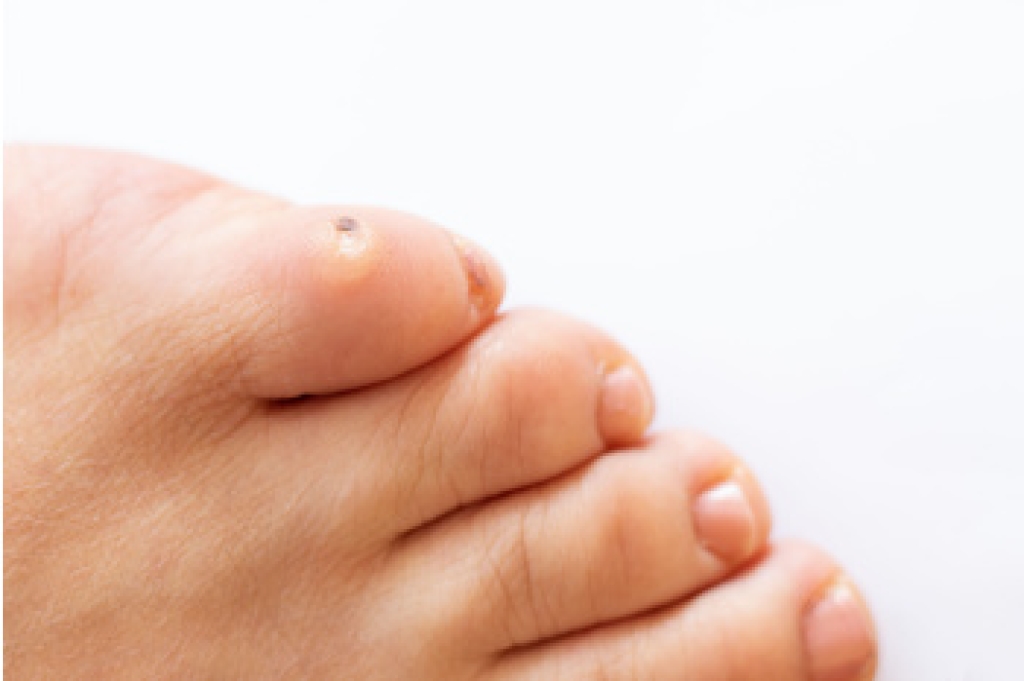
Corns are thickened areas of skin that develop due to repeated pressure or friction, commonly on the feet. There are three main types of corns. Hard corns appear as small, dense, and raised bumps often found on the tops or sides of toes. Soft corns are softer and rubbery, usually occurring between toes where moisture is present. Seed corns are tiny, clustered corns found on the soles of the feet. Symptoms include discomfort or pain when walking or wearing shoes, and the skin may feel rough, dry, or tender. Corns are caused by ill-fitting shoes, abnormal foot mechanics, or repetitive activities. A podiatrist can diagnose corns through examination and recommend treatments. Options include protective padding, shoe modifications, trimming or removal of the corn, and addressing underlying causes like foot deformities. It is suggested that you make an appointment with a podiatrist to relieve pain and prevent corns from worsening or recurring.
Corns can make walking very painful and should be treated immediately. If you have questions regarding your feet and ankles, contact Leonard Talarico, DPM of Georgia. Our doctor will treat your foot and ankle needs.
Corns: What Are They? And How Do You Get Rid of Them?
Corns are thickened areas on the skin that can become painful. They are caused by excessive pressure and friction on the skin. Corns press into the deeper layers of the skin and are usually round in shape.
Ways to Prevent Corns
There are many ways to get rid of painful corns such as:
- Wearing properly fitting shoes that have been measured by a professional
- Wearing shoes that are not sharply pointed or have high heels
- Wearing only shoes that offer support
Treating Corns
Although most corns slowly disappear when the friction or pressure stops, this isn’t always the case. Consult with your podiatrist to determine the best treatment option for your case of corns.
If you have any questions, please feel free to contact our office located in Pooler, GA . We offer the newest diagnostic and treatment technologies for all your foot care needs.